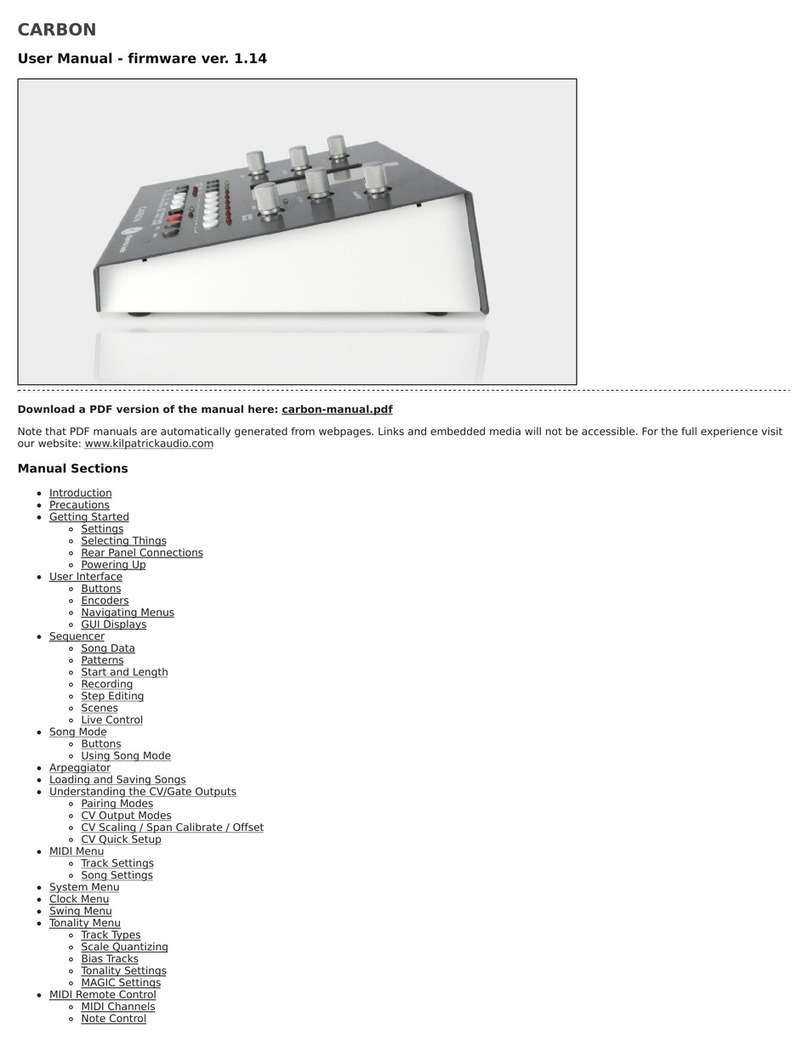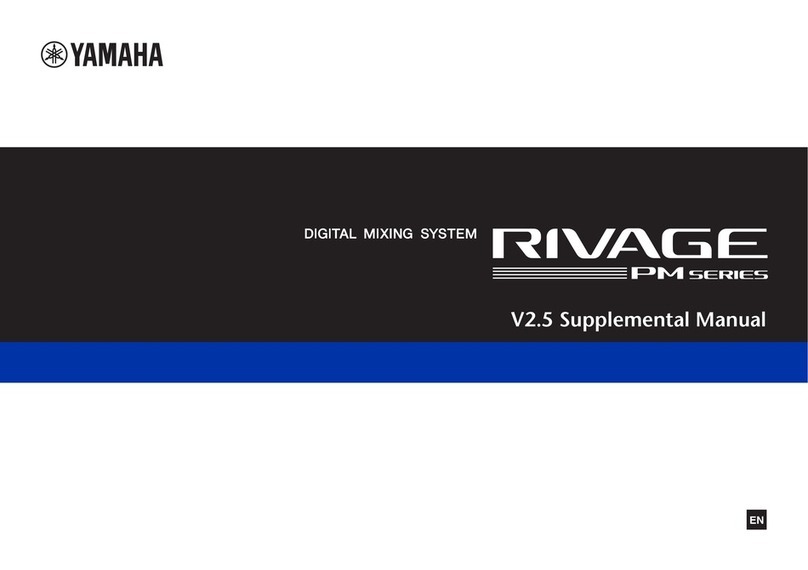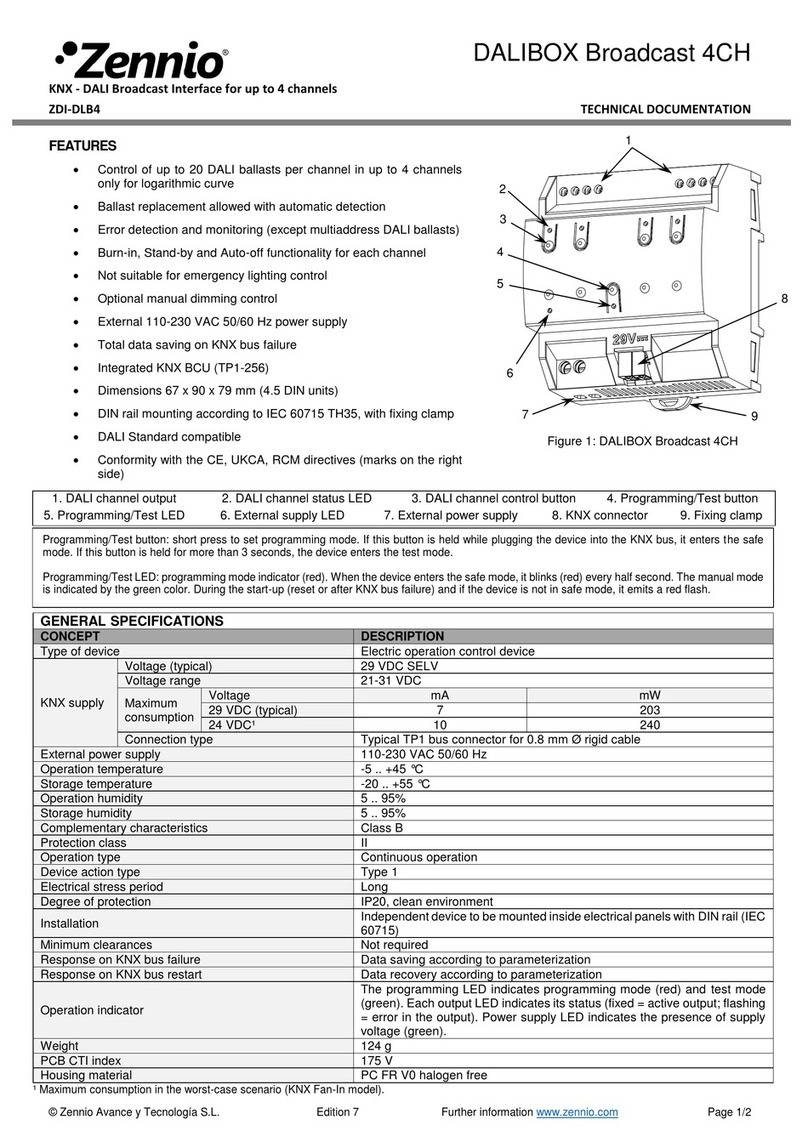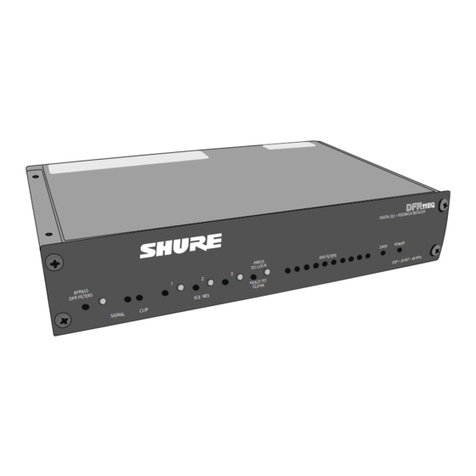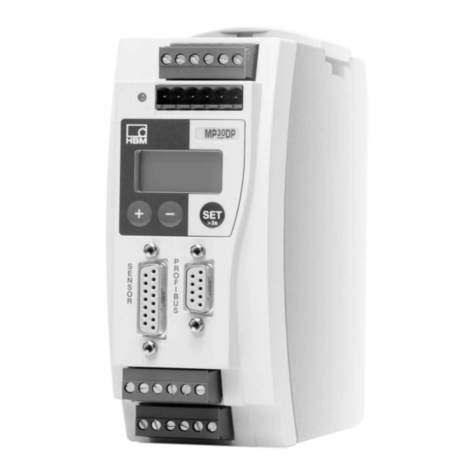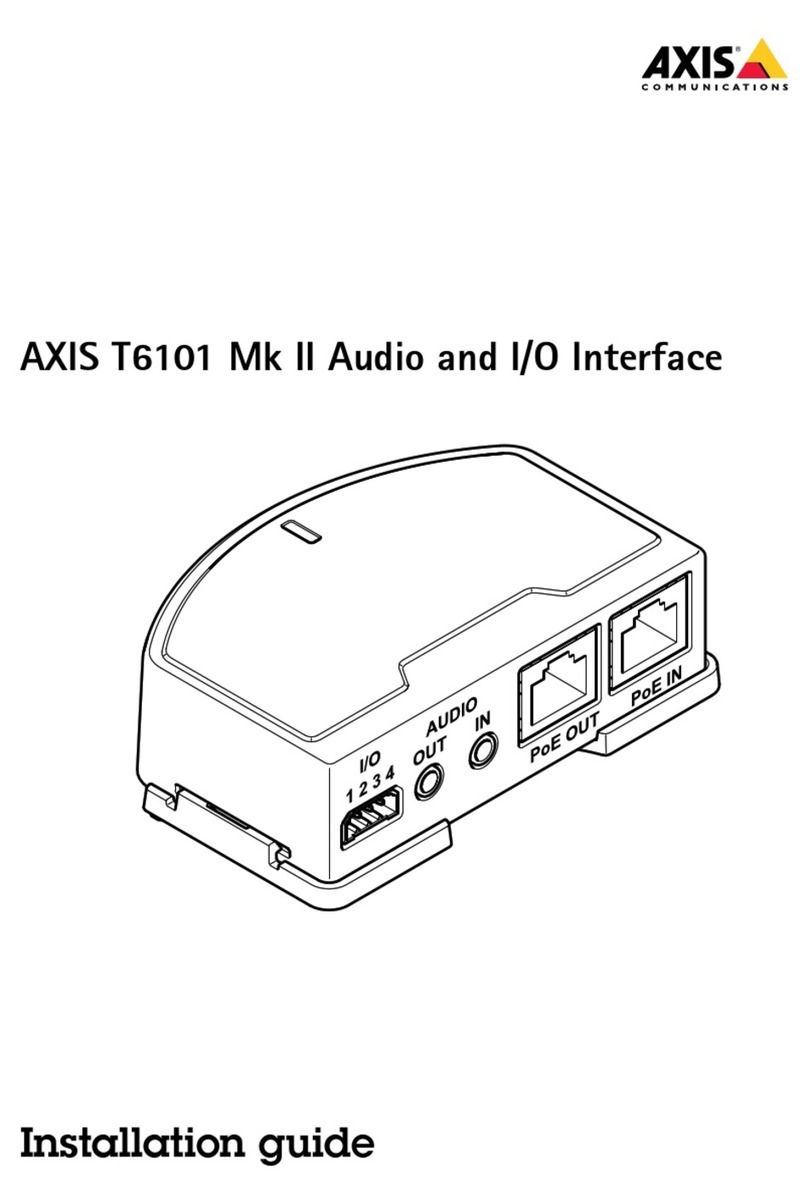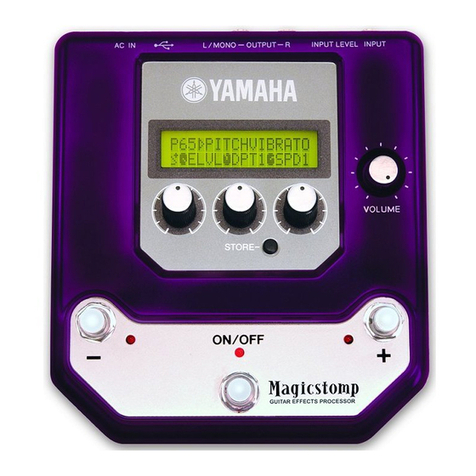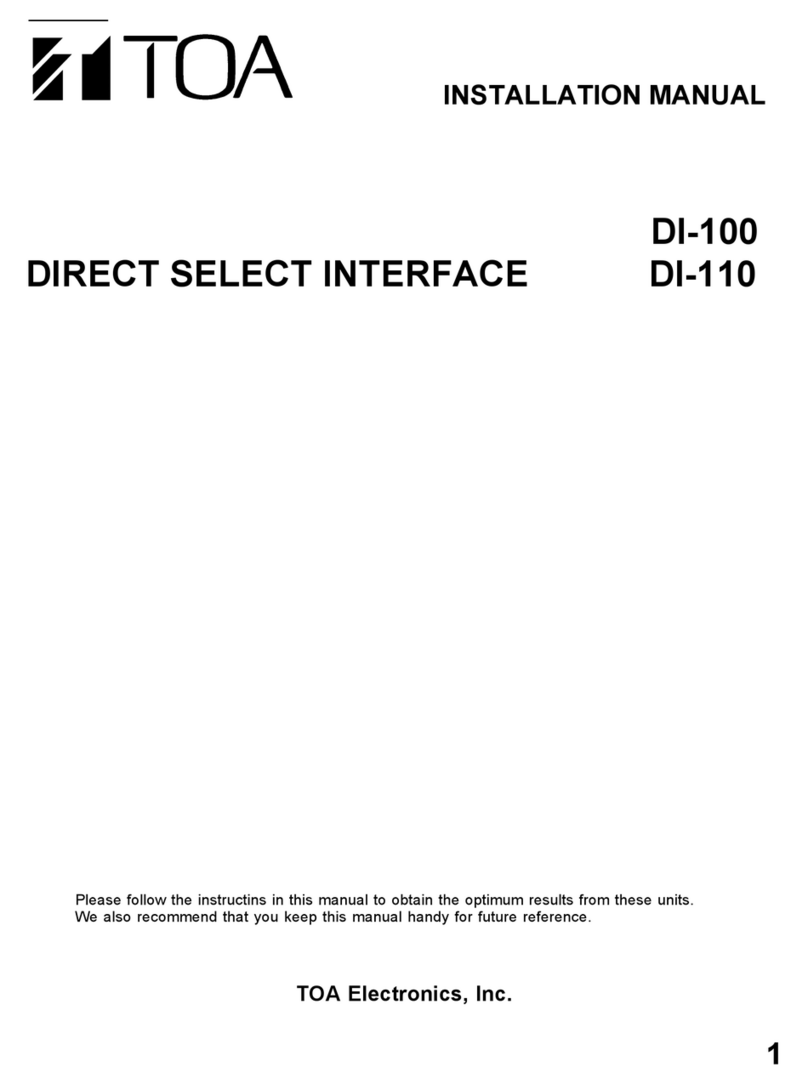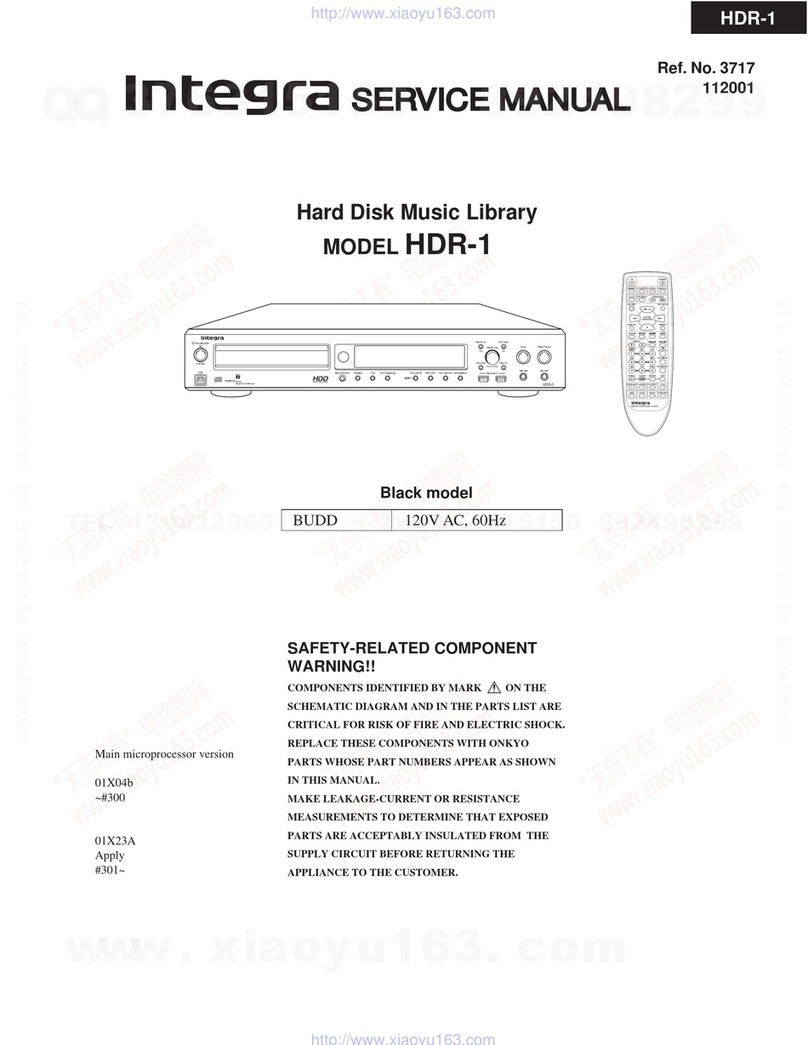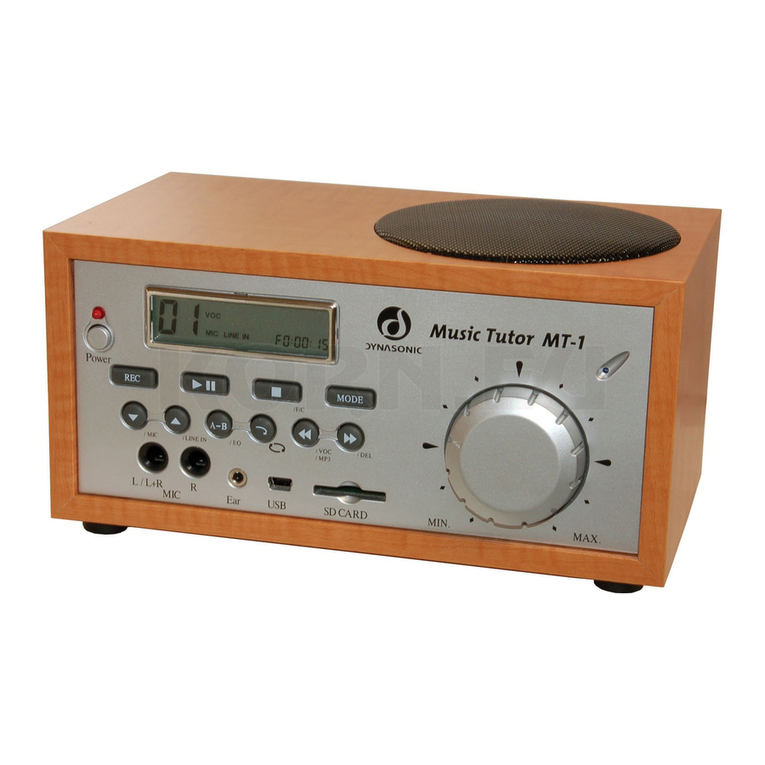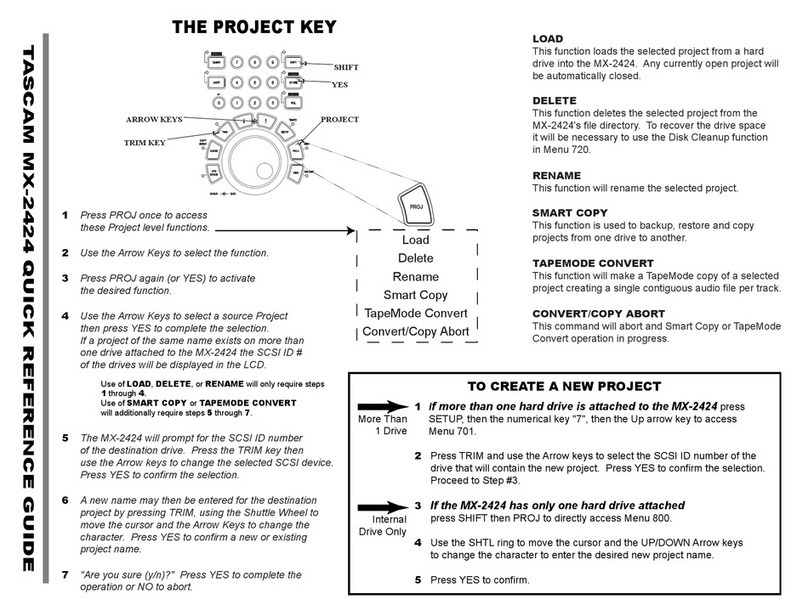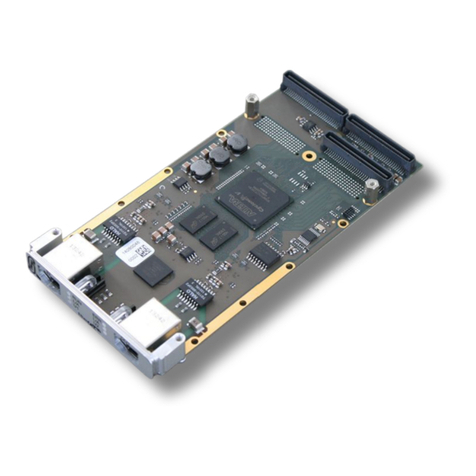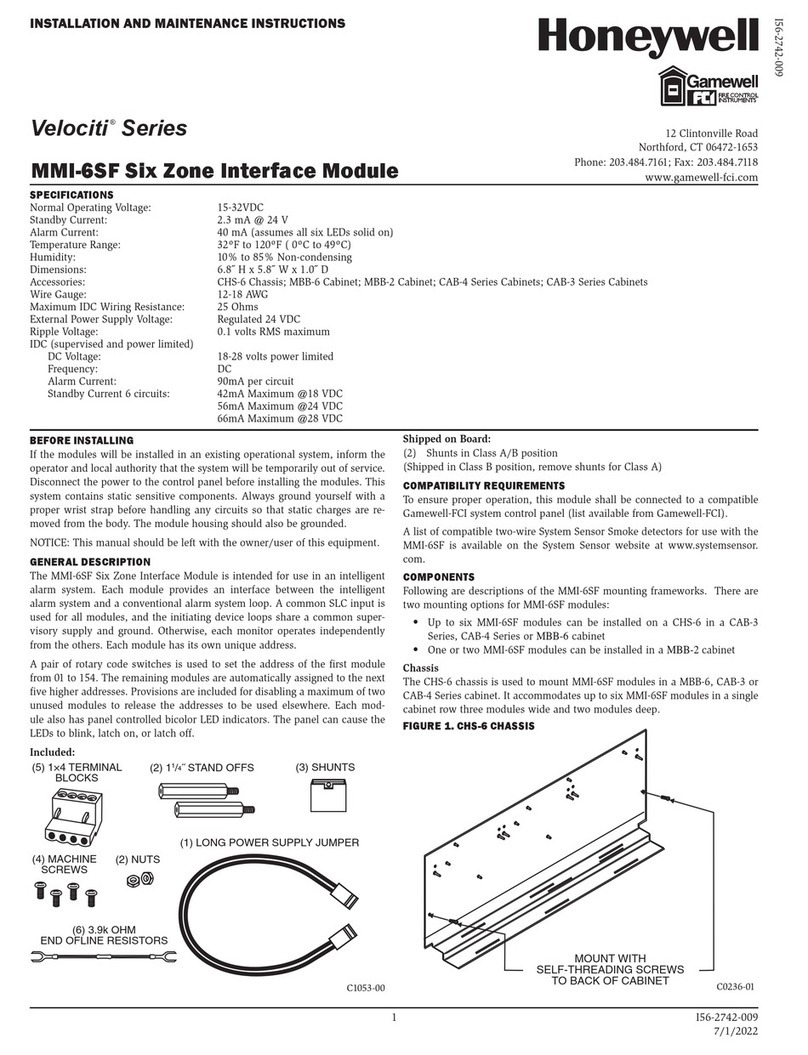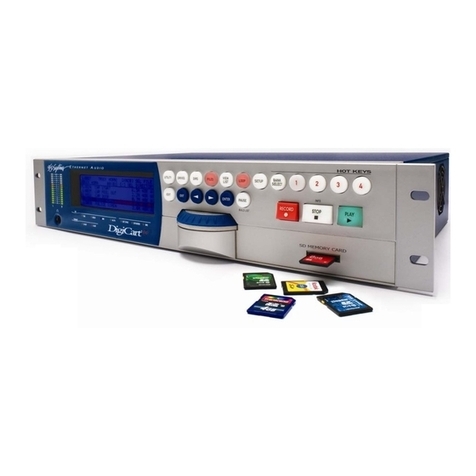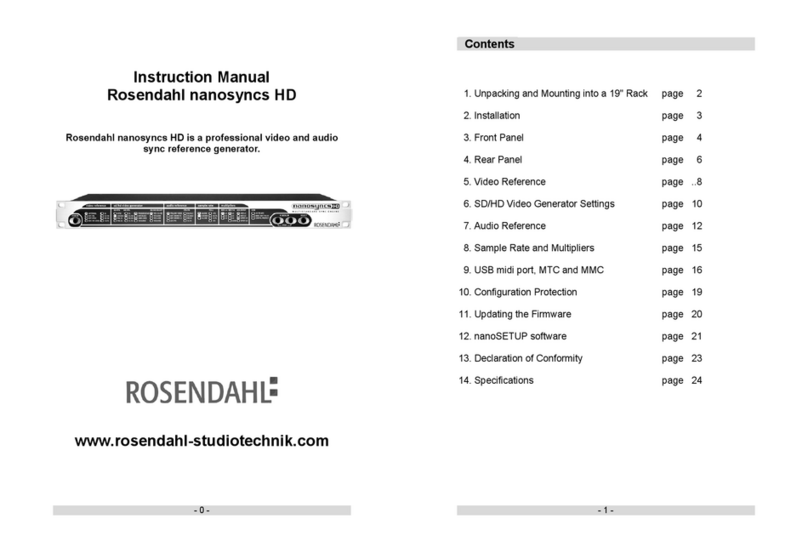EMT PSP 244 User manual

Acknowledgments
Programming and Design: Mateusz Woźniak
Original reverberation algorithms: Barry Blesser
Additional Programming: Piotr Dmuchowski & Adam Taborowski
Hardware assistance: Joachim Krukowski
Graphics: Mateusz Woźniak
Product Manager: Antoni Ożyński
Documentation: Orren Merton
Installer: Piotr Dmuchowski
Additional presets: Steve Levine
Presets designed by
•Andi Vax https://www.andivaxmastering.com
•Miroslav Pajic Miro on SoundCloud
•Sebastian Imbierowicz aka 600Vmusic DJ 600V facebook site
Special thanks to:
Barry Blesser – the creator of EMT 250, EMT 244 and EMT 245 reverberation algorithms for
his extensive support.
Thanks to all our customers around the world for ideas and help in development of new
plug-ins!
By using this software you agree to the terms of any license agreement accompanying it.
“PSP”, the PSP logo, “PSP 2445”, and “It’s the sound that counts!” are trademarks of
PSPaudioware.com s.c.
EMT and its Logo, EMT 244, EMT 245, EMT 250 are registered trademarks of EMT
International GmbH.
All other trademarks are the property of their respective owners.
© 2021 PSPaudioware.com s.c.
Acknowledgments
Programming and Design: Mateusz Woźniak
Original reverberation algorithms: Barry Blesser
Additional Programming: Piotr Dmuchowski & Adam Taborowski
Hardware assistance: Joachim Krukowski
Graphics: Mateusz Woźniak
Product Manager: Antoni Ożyński
Documentation: Orren Merton
Installer: Piotr Dmuchowski
Additional presets: Steve Levine
Presets designed by
•Andi Vax https://www.andivaxmastering.com
•Miroslav Pajic Miro on SoundCloud
•Sebastian Imbierowicz aka 600Vmusic DJ 600V facebook site
Special thanks to:
Barry Blesser – the creator of EMT 250, EMT 244 and EMT 245 reverberation algorithms for
his extensive support.
Thanks to all our customers around the world for ideas and help in development of new
plug-ins!
By using this software you agree to the terms of any license agreement accompanying it.
“PSP”, the PSP logo, “PSP 2445”, and “It’s the sound that counts!” are trademarks of
PSPaudioware.com s.c.
EMT and its Logo, EMT 244, EMT 245, EMT 250 are registered trademarks of EMT
International GmbH.
All other trademarks are the property of their respective owners.
© 2021 PSPaudioware.com s.c.

Table Of Contents
ACKNOWLEDGMENTS.....................................................................................................................................................................2
END USER LICENSE AGREEMENT.....................................................................................................................................4
PSP 2445........................................................................................................................................................................................5
CONTROLS......................................................................................................................................................................................5
PRESET HANDLING & VIEW OPTIONS...........................................................................................................................8
PRESET BROWSER..........................................................................................................................................................................9
COPY / PASTE.............................................................................................................................................................................10
A/B SYSTEM...............................................................................................................................................................................10
UNDO / REDO.............................................................................................................................................................................10
100% GUI RESIZING.................................................................................................................................................................10
CONFIG SECTION....................................................................................................................................................................11
MINIMUM SYSTEM REQUIREMENTS...........................................................................................................................12
PROCESSING.............................................................................................................................................................................13
SUPPORT....................................................................................................................................................................................14
___________________________________________________________________
PSP 2445 Operation Manual 3
Table Of Contents
ACKNOWLEDGMENTS.....................................................................................................................................................................2
END USER LICENSE AGREEMENT.....................................................................................................................................4
PSP 2445........................................................................................................................................................................................5
CONTROLS......................................................................................................................................................................................5
PRESET HANDLING & VIEW OPTIONS...........................................................................................................................8
PRESET BROWSER..........................................................................................................................................................................9
COPY / PASTE.............................................................................................................................................................................10
A/B SYSTEM...............................................................................................................................................................................10
UNDO / REDO.............................................................................................................................................................................10
100% GUI RESIZING.................................................................................................................................................................10
CONFIG SECTION....................................................................................................................................................................11
MINIMUM SYSTEM REQUIREMENTS...........................................................................................................................12
PROCESSING.............................................................................................................................................................................13
SUPPORT....................................................................................................................................................................................14
___________________________________________________________________
PSP 2445 Operation Manual 3

End User License Agreement
PREFACE: This End-User License Agreement (“EULA”) is a legal agreement between you and
PSPaudioware.com s.c. (PSP) for the PSP product accompanying this EULA, which includes
computer software and may include associated media, printed materials, and “online” or
electronic documentation (“SOFTWARE”). By installing, copying, or using the SOFTWARE,
you agree to be bound by the terms of this EULA. If you do not agree to the terms of this
EULA, you may not use the SOFTWARE. The SOFTWARE is protected by copyright laws and
international copyright treaties, as well as other intellectual property laws and treaties. The
SOFTWARE is licensed, not sold.
LICENSE: You can INSTALL and USE the current version of the SOFTWARE, or in its place any
prior version, on three computers simultaneously so long as you are the direct user or a studio
client of those machines. If more users USE the software you must buy an additional license
for each workstation. The DEMO VERSION of the SOFTWARE is NOT LICENSED FOR
COMMERCIAL USE.
RESTRICTIONS: You may not transfer, modify, rent, lease, loan, resell, distribute, network,
electronically transmit or merge the SOFTWARE. You may not reverse engineer, decompile or
disassemble the SOFTWARE, or otherwise attempt to discover the SOFTWARE source code.
You are not permitted to copy the SOFTWARE or any of the accompanying documentation.
COPYRIGHTS: All title and copyrights in and to the SOFTWARE (including but not limited to
any images, photographs, animations, video, audio, music, text, and “applets” incorporated
into the SOFTWARE ), the accompanying printed materials, and any copies of the SOFTWARE
are owned by PSP. The SOFTWARE is protected by copyright laws and international treaty
provisions. Unauthorized reproduction or distribution of the SOFTWARE or documentation is
subject to civil and criminal penalties.
DISCLAIMER OF WARRANTY: The SOFTWARE is provided “AS IS” and without warranty of
any kind. The entire risk arising out of the use or performance of the SOFTWARE and
documentation remains with user. To the maximum extent permitted by applicable law, PSP
further disclaims all warranties, either express or implied, including, but not limited to, implied
warranties of merchantability and fitness for a particular purpose, with regard to the
SOFTWARE, and any accompanying hardware. To the maximum extent permitted by
applicable law, in no event shall PSP be liable for any consequential, incidental, direct, indirect,
special, punitive, or other damages whatsoever (including, without limitation, damages for
loss of business profits, business interruption, loss of business information, or other pecuniary
loss) arising out of this EULA or the use of or inability to use the SOFTWARE, even if PSP has
been advised of the possibility of such damages.
MISCELLANEOUS: This EULA is governed by Polish law. Should you have any questions
concerning this EULA, or if you wish to contact PSP for any reason, please write to:
PSPaudioware.com s.c.
Bugaj 12;
05-806 Komorów,
Poland.
___________________________________________________________________
PSP 2445 Operation Manual 4
End User License Agreement
PREFACE: This End-User License Agreement (“EULA”) is a legal agreement between you and
PSPaudioware.com s.c. (PSP) for the PSP product accompanying this EULA, which includes
computer software and may include associated media, printed materials, and “online” or
electronic documentation (“SOFTWARE”). By installing, copying, or using the SOFTWARE,
you agree to be bound by the terms of this EULA. If you do not agree to the terms of this
EULA, you may not use the SOFTWARE. The SOFTWARE is protected by copyright laws and
international copyright treaties, as well as other intellectual property laws and treaties. The
SOFTWARE is licensed, not sold.
LICENSE: You can INSTALL and USE the current version of the SOFTWARE, or in its place any
prior version, on three computers simultaneously so long as you are the direct user or a studio
client of those machines. If more users USE the software you must buy an additional license
for each workstation. The DEMO VERSION of the SOFTWARE is NOT LICENSED FOR
COMMERCIAL USE.
RESTRICTIONS: You may not transfer, modify, rent, lease, loan, resell, distribute, network,
electronically transmit or merge the SOFTWARE. You may not reverse engineer, decompile or
disassemble the SOFTWARE, or otherwise attempt to discover the SOFTWARE source code.
You are not permitted to copy the SOFTWARE or any of the accompanying documentation.
COPYRIGHTS: All title and copyrights in and to the SOFTWARE (including but not limited to
any images, photographs, animations, video, audio, music, text, and “applets” incorporated
into the SOFTWARE ), the accompanying printed materials, and any copies of the SOFTWARE
are owned by PSP. The SOFTWARE is protected by copyright laws and international treaty
provisions. Unauthorized reproduction or distribution of the SOFTWARE or documentation is
subject to civil and criminal penalties.
DISCLAIMER OF WARRANTY: The SOFTWARE is provided “AS IS” and without warranty of
any kind. The entire risk arising out of the use or performance of the SOFTWARE and
documentation remains with user. To the maximum extent permitted by applicable law, PSP
further disclaims all warranties, either express or implied, including, but not limited to, implied
warranties of merchantability and fitness for a particular purpose, with regard to the
SOFTWARE, and any accompanying hardware. To the maximum extent permitted by
applicable law, in no event shall PSP be liable for any consequential, incidental, direct, indirect,
special, punitive, or other damages whatsoever (including, without limitation, damages for
loss of business profits, business interruption, loss of business information, or other pecuniary
loss) arising out of this EULA or the use of or inability to use the SOFTWARE, even if PSP has
been advised of the possibility of such damages.
MISCELLANEOUS: This EULA is governed by Polish law. Should you have any questions
concerning this EULA, or if you wish to contact PSP for any reason, please write to:
PSPaudioware.com s.c.
Bugaj 12;
05-806 Komorów,
Poland.
___________________________________________________________________
PSP 2445 Operation Manual 4

PSP 2445
PSP 2445 is a reverb processor inspired by algorithms from two legendary early digital age
reverberators: the EMT 244 and the EMT 245. PSP thoroughly researched how to bring the
specific features of those simple, yet very musical sounding reverbs to life as a plug-in. We
then improved from the originals with a handy set of parameters to control details of the
sound and mix the reverb not available in the original hardware. The PSP 2445 is capable of
processing using one selected engine or both of them simultaneously.
Controls
Power switch – click on the I/O switch or the power indicator to engage or disengage the
signal feed to the processing algorithms. When set to “O” the PSP 2445 is not bypassed and
the output signal depends on Mix and Output Gain settings. Use your host application’s plug-
in bypass control to fully bypass the 2445 reverb.
Engine switch – click and drag the rotary switch to the left, middle or right or click on one of
labels to select the engine mode:
•244 – only the 244 reverberation engine will be mixed to the output,
•+ - both 244 and 245 reverberation engines will be mixed to the output simultaneously,
•245 – only the 245 reverberation engine will be mixed to the output.
Input Level meter – indicates the signal level reaching the inputs of the reverberation
algorithms. Any value above 0dB will be clipped on the input.
Input Level knob – sets the input level fed to reverberation algorithms.
Delay – sets the predelay time added before the reverberation occurs.
Reflections – sets the amount of early reflections mixed before the reverb tail.
Time knob – sets the reverberation time.
PSP 2445 label – click on the label to open the about box of the plug-in. The about box
contains information about plug-in and authorization details. Click wherever on the about box
area to switch bak to normal plug-in’s view.
___________________________________________________________________
PSP 2445 Operation Manual 5
PSP 2445
PSP 2445 is a reverb processor inspired by algorithms from two legendary early digital age
reverberators: the EMT 244 and the EMT 245. PSP thoroughly researched how to bring the
specific features of those simple, yet very musical sounding reverbs to life as a plug-in. We
then improved from the originals with a handy set of parameters to control details of the
sound and mix the reverb not available in the original hardware. The PSP 2445 is capable of
processing using one selected engine or both of them simultaneously.
Controls
Power switch – click on the I/O switch or the power indicator to engage or disengage the
signal feed to the processing algorithms. When set to “O” the PSP 2445 is not bypassed and
the output signal depends on Mix and Output Gain settings. Use your host application’s plug-
in bypass control to fully bypass the 2445 reverb.
Engine switch – click and drag the rotary switch to the left, middle or right or click on one of
labels to select the engine mode:
•244 – only the 244 reverberation engine will be mixed to the output,
•+ - both 244 and 245 reverberation engines will be mixed to the output simultaneously,
•245 – only the 245 reverberation engine will be mixed to the output.
Input Level meter – indicates the signal level reaching the inputs of the reverberation
algorithms. Any value above 0dB will be clipped on the input.
Input Level knob – sets the input level fed to reverberation algorithms.
Delay – sets the predelay time added before the reverberation occurs.
Reflections – sets the amount of early reflections mixed before the reverb tail.
Time knob – sets the reverberation time.
PSP 2445 label – click on the label to open the about box of the plug-in. The about box
contains information about plug-in and authorization details. Click wherever on the about box
area to switch bak to normal plug-in’s view.
___________________________________________________________________
PSP 2445 Operation Manual 5

Low Frequency Time switch – click on the switch or on LEDs above it to switch between
normal and extended reverberation time for low frequency range.
High Frequency Time switch – click on the switch or on the LEDs above it to switch between
normal and dampened reverberation for the high frequency range.
Output Mix knob – sets the amount of dry to reverberated signal ratio.
Output Gain knob – sets the level of the mixed output signal.
Flap – click on the OPEN label opens the hidden parameters flap.
Route – selects plug-in’s input and output routing.
___________________________________________________________________
PSP 2445 Operation Manual 6
The Original EMT 244 and EMT 245 operated using a mono-to-stereo configuration.
Since we have both engines running simultaneously we can provide more stereo
configurations!with a wet signal.
With the Route switch you can select between three signal configurations:
1. Standard Mono-Stereo configuration. In this configuration any single engine
(244 or 245), or both running in parallel (244 + 245), can provide a stereo output followed
by Width,!Balance, Mix and Output.
2. Stereo-Stereo mode varies the sound depending on which input channel the signal!
!is coming from. In this mode the stereo reverb differs from standard Mono-Stereo even!
!if the input is fed with a mono signal because of the additional processing used to create
True Stereo-to-Stereo operation. Using a single 244 or 245 engine results in a highly
shifted stereo!field, thus 244 + 245 mode is recommended. For best results set!244
to II-I and set 245 to I-II configuration.
!3. Dual Mono mode allows you to run the 244 engine on the left channel and the 245
on the right!channel without any cross-feeding. For dense reverb set 244 and 245 engines
to I-II. For sparse reverb tail select II-I mode for both engines.
In all modes Width and Balance work the same as in!Mono-Stereo mode.
Low Frequency Time switch – click on the switch or on LEDs above it to switch between
normal and extended reverberation time for low frequency range.
High Frequency Time switch – click on the switch or on the LEDs above it to switch between
normal and dampened reverberation for the high frequency range.
Output Mix knob – sets the amount of dry to reverberated signal ratio.
Output Gain knob – sets the level of the mixed output signal.
Flap – click on the OPEN label opens the hidden parameters flap.
Route – selects plug-in’s input and output routing.
___________________________________________________________________
PSP 2445 Operation Manual 6
The Original EMT 244 and EMT 245 operated using a mono-to-stereo configuration.
Since we have both engines running simultaneously we can provide more stereo
configurations!with a wet signal.
With the Route switch you can select between three signal configurations:
1. Standard Mono-Stereo configuration. In this configuration any single engine
(244 or 245), or both running in parallel (244 + 245), can provide a stereo output followed
by Width,!Balance, Mix and Output.
2. Stereo-Stereo mode varies the sound depending on which input channel the signal!
!is coming from. In this mode the stereo reverb differs from standard Mono-Stereo even!
!if the input is fed with a mono signal because of the additional processing used to create
True Stereo-to-Stereo operation. Using a single 244 or 245 engine results in a highly
shifted stereo!field, thus 244 + 245 mode is recommended. For best results set!244
to II-I and set 245 to I-II configuration.
!3. Dual Mono mode allows you to run the 244 engine on the left channel and the 245
on the right!channel without any cross-feeding. For dense reverb set 244 and 245 engines
to I-II. For sparse reverb tail select II-I mode for both engines.
In all modes Width and Balance work the same as in!Mono-Stereo mode.

245 out I-II / II-I switch – selects how the 245 engine routes the signal to the plug-ins’s Left
and Right output channels. I-II is a default routing. II-I swaps the output channels’ routing.
MOD multiplier – sets the reverberator’s modulation depth. The default value is at the 12
o’clock position. Turning the trimpot clockwise leads to a strongly modulated and muddied
effect. Turning the trimpot counter-clockwise reduces the modulation which results in
reduced tail smoothness and a more resonant character to the reverberation tail.
Close button – click to close the hidden parameters’ flap.
HPF – sets the reverberation high pass filter to reduce the amount of low frequency content
in the reverberated signal. The high pass filter is located on the input of the reverberation
input.
LOW – adjusts the reverberation time for low frequency range.
HIGH – adjusts the reverberation time for high frequency range.
WIDTH – sets the stereo width of the reverberated signal.
BALance – sets the balance of the reverberated signal.
___________________________________________________________________
PSP 2445 Operation Manual 7
Most algorithmic reverberators have some inherent modulation—sometimes noticeable,
sometimes not. This is because the complexity of algorithmic reverbs is considerably
simplified from an actual studio or hall environment. This is reflected in the number
of resonances, or the pattern and mechanical character, of reverb tail reflections. To deal
with these limitations, modulation is added to spread resonances and smooth out a tail
pattern. Sometimes you may want this modulation to obvious on tracks, other times you
may not, so we provide a parameter that will lessen or exaggerate the modulation
in PSP 2445. The lower the modulation the more synthetic, resonant and grainy
the reverb is—however chorusing is less noticeable. The higher the modulation level
is set the less periodic the reverb tail is and is more blurred—at the expanse
of exaggerated chorusing effects.
Try lowering the MOD multiplier counter clockwise from the 12:00 hardware default
setting if a track naturally exaggerates the reverb's internal modulation. Set the MOD
to a high value by turning it clockwise if you want to get a blurred tail with a highly
noticeable warbling.
245 out I-II / II-I switch – selects how the 245 engine routes the signal to the plug-ins’s Left
and Right output channels. I-II is a default routing. II-I swaps the output channels’ routing.
MOD multiplier – sets the reverberator’s modulation depth. The default value is at the 12
o’clock position. Turning the trimpot clockwise leads to a strongly modulated and muddied
effect. Turning the trimpot counter-clockwise reduces the modulation which results in
reduced tail smoothness and a more resonant character to the reverberation tail.
Close button – click to close the hidden parameters’ flap.
HPF – sets the reverberation high pass filter to reduce the amount of low frequency content
in the reverberated signal. The high pass filter is located on the input of the reverberation
input.
LOW – adjusts the reverberation time for low frequency range.
HIGH – adjusts the reverberation time for high frequency range.
WIDTH – sets the stereo width of the reverberated signal.
BALance – sets the balance of the reverberated signal.
___________________________________________________________________
PSP 2445 Operation Manual 7
Most algorithmic reverberators have some inherent modulation—sometimes noticeable,
sometimes not. This is because the complexity of algorithmic reverbs is considerably
simplified from an actual studio or hall environment. This is reflected in the number
of resonances, or the pattern and mechanical character, of reverb tail reflections. To deal
with these limitations, modulation is added to spread resonances and smooth out a tail
pattern. Sometimes you may want this modulation to obvious on tracks, other times you
may not, so we provide a parameter that will lessen or exaggerate the modulation
in PSP 2445. The lower the modulation the more synthetic, resonant and grainy
the reverb is—however chorusing is less noticeable. The higher the modulation level
is set the less periodic the reverb tail is and is more blurred—at the expanse
of exaggerated chorusing effects.
Try lowering the MOD multiplier counter clockwise from the 12:00 hardware default
setting if a track naturally exaggerates the reverb's internal modulation. Set the MOD
to a high value by turning it clockwise if you want to get a blurred tail with a highly
noticeable warbling.

Preset Handling & View Options
We provide all PSP plugins with a collection of factory presets. These presets can be used
as a starting point for further adjustments, or for quick fixes.
You access presets from the PSPaudioware standard PRESET BAR at the top of the plug-
in interface.
___________________________________________________________________
PSP 2445 Operation Manual 8
Preset Handling & View Options
We provide all PSP plugins with a collection of factory presets. These presets can be used
as a starting point for further adjustments, or for quick fixes.
You access presets from the PSPaudioware standard PRESET BAR at the top of the plug-
in interface.
___________________________________________________________________
PSP 2445 Operation Manual 8

Preset Browser
The PSP 2445 EMT edition features a comprehensive new preset management and
browser system. To access the preset browser, you click the preset name window at the top
of the plug-in (which displays ‘Default’ when the plug-in loads).
The new preset management bar has three main categories which can be accessed with
the tabs at the top of the preset browser: Application, Designer, and My presets.
Application - shows all factory built-in presets grouping by application.
< Factory presets are built into the plugin and cannot be directly edited!
You can adjust them and save separately as user presets >
Designer - shows all factory built-in presets grouped by designer.
My presets - shows only user presets.
This view shows all of the presets you have created and saved, or downloaded and added
to your custom presets for PSP 2445 EMT.
To add categories to the preset list, you can create new subfolders in the preset directory.
For Windows users, this is located at:
C:\Users\Username\Documents\PSPaudioware.com\User Presets\PSP 2445
EMT
For Mac users, this is located at:
~/Documents/PSPaudioware.com/User Presets/PSP 2445 EMT
< You can always check the exact path by clicking on the "Show file in Finder" tab
at the bottom of the preset browser window. >
To select a preset, click a preset name in the right window. When clicked, the preset will be
applied so that you can audition it. To confirm the preset choice, you can click the preset
name once more to load it.
Each preset has own picture, click on it to open the designer's website.
___________________________________________________________________
PSP 2445 Operation Manual 9
Preset Browser
The PSP 2445 EMT edition features a comprehensive new preset management and
browser system. To access the preset browser, you click the preset name window at the top
of the plug-in (which displays ‘Default’ when the plug-in loads).
The new preset management bar has three main categories which can be accessed with
the tabs at the top of the preset browser: Application, Designer, and My presets.
Application - shows all factory built-in presets grouping by application.
< Factory presets are built into the plugin and cannot be directly edited!
You can adjust them and save separately as user presets >
Designer - shows all factory built-in presets grouped by designer.
My presets - shows only user presets.
This view shows all of the presets you have created and saved, or downloaded and added
to your custom presets for PSP 2445 EMT.
To add categories to the preset list, you can create new subfolders in the preset directory.
For Windows users, this is located at:
C:\Users\Username\Documents\PSPaudioware.com\User Presets\PSP 2445
EMT
For Mac users, this is located at:
~/Documents/PSPaudioware.com/User Presets/PSP 2445 EMT
< You can always check the exact path by clicking on the "Show file in Finder" tab
at the bottom of the preset browser window. >
To select a preset, click a preset name in the right window. When clicked, the preset will be
applied so that you can audition it. To confirm the preset choice, you can click the preset
name once more to load it.
Each preset has own picture, click on it to open the designer's website.
___________________________________________________________________
PSP 2445 Operation Manual 9

Copy / Paste
The Copy/Paste feature allows you to quickly transfer settings between instances of the
plug-in.
To use this feature, you can click ‘Copy’ at the top of the plugin below the preset browser
window. Then, open a new instance of the plug-in on another track (or on the same track)
and click ‘Paste’ to paste the settings to the new instance of the plug-in.
This feature can be particularly useful for processing similar instruments or sounds when
only a few minor tweaks are needed.
A/B System
The A/B system for quickly checking and auditioning changes to the plugin settings.
The A/B Button at the top of the interface below the preset browser window allows you to
A/B between the current and previous setting of the plug-in. This can be used to audition
changes made to your mix, or to audition between two presets.
The A>B Button quickly copies the settings of the Asetting to the Bsetting. This allows
you to save your place and apply further tweaks and the audition them with the A/B Button.
Undo / Redo
The Undo/Redo feature of the plugin lets you quickly navigate between setting changes.
To use this feature, use the undo/redo buttons (CCW and CW arrows, respectively) located
below the preset browser window.
These buttons will undo changes to the current plug-in settings, or allow you to undo a
preset change depending on the last action in the plug-in.
100% GUI resizing
Scroll (by the mouse wheel or use two finger to move on the touchpad) this percentage up
or down to change the GUIs zoom factor. Double click to reset its state to the default size
(100%).
You can resize the plug-in interface by just dragging the right bottom corner of the plug-in to
any size you like.
___________________________________________________________________
PSP 2445 Operation Manual 10
Copy / Paste
The Copy/Paste feature allows you to quickly transfer settings between instances of the
plug-in.
To use this feature, you can click ‘Copy’ at the top of the plugin below the preset browser
window. Then, open a new instance of the plug-in on another track (or on the same track)
and click ‘Paste’ to paste the settings to the new instance of the plug-in.
This feature can be particularly useful for processing similar instruments or sounds when
only a few minor tweaks are needed.
A/B System
The A/B system for quickly checking and auditioning changes to the plugin settings.
The A/B Button at the top of the interface below the preset browser window allows you to
A/B between the current and previous setting of the plug-in. This can be used to audition
changes made to your mix, or to audition between two presets.
The A>B Button quickly copies the settings of the Asetting to the Bsetting. This allows
you to save your place and apply further tweaks and the audition them with the A/B Button.
Undo / Redo
The Undo/Redo feature of the plugin lets you quickly navigate between setting changes.
To use this feature, use the undo/redo buttons (CCW and CW arrows, respectively) located
below the preset browser window.
These buttons will undo changes to the current plug-in settings, or allow you to undo a
preset change depending on the last action in the plug-in.
100% GUI resizing
Scroll (by the mouse wheel or use two finger to move on the touchpad) this percentage up
or down to change the GUIs zoom factor. Double click to reset its state to the default size
(100%).
You can resize the plug-in interface by just dragging the right bottom corner of the plug-in to
any size you like.
___________________________________________________________________
PSP 2445 Operation Manual 10

CONFIG section
When clicking the three parallel lines glyph, the CONFIG menu will open and it allows you
to open the manual, check the current plugin version number and turn on/off hints.
___________________________________________________________________
PSP 2445 Operation Manual 11
CONFIG section
When clicking the three parallel lines glyph, the CONFIG menu will open and it allows you
to open the manual, check the current plugin version number and turn on/off hints.
___________________________________________________________________
PSP 2445 Operation Manual 11

Minimum System Requirements
PC
VST3
Windows 7 – Windows 11
64-bit VST3 compatible application
VST
Windows 7 – Windows 11
64-bit VST compatible application
AAX
Windows 7 – Windows 11
64-bit Pro Tools 11, 12 or Pro Tools HD 11, 12 or Pro Tools Ultimate
All DAWs
The latest iLok License Manager application installed (an iLok dongle not required)
Mac (macIntel or arm AppleSilicon processors)
AudioUnit
macOS 10.10 – macOS 12.01 Montery
64-bit AudioUnit compatible host application
VST
macOS 10.10 – macOS 12.01 Montery
64-bit VST compatible host application
VST3
macOS 10.10 – macOS 12.01 Montery
64-bit VST3 compatible host application
AAX
macOS 10.10 – macOS 12.01 Montery
64-bit Pro Tools 11, 12 or Pro Tools HD 11, 12 or Pro Tools Ultimate
All DAWs
Up to date iLok License Manager application installed (an iLok dongle not required)
VST, VST3 are trademarks and software of Steinberg Media Technologies GmbH. AAX, Pro
Tools, and RTAS are trademarks or registered trademarks of Avid Technology, Inc. AudioUnit,
OSX, macOS, Apple Silicon are trademarks of Apple Inc.
___________________________________________________________________
PSP 2445 Operation Manual 12
Minimum System Requirements
PC
VST3
Windows 7 – Windows 11
64-bit VST3 compatible application
VST
Windows 7 – Windows 11
64-bit VST compatible application
AAX
Windows 7 – Windows 11
64-bit Pro Tools 11, 12 or Pro Tools HD 11, 12 or Pro Tools Ultimate
All DAWs
The latest iLok License Manager application installed (an iLok dongle not required)
Mac (macIntel or arm AppleSilicon processors)
AudioUnit
macOS 10.10 – macOS 12.01 Montery
64-bit AudioUnit compatible host application
VST
macOS 10.10 – macOS 12.01 Montery
64-bit VST compatible host application
VST3
macOS 10.10 – macOS 12.01 Montery
64-bit VST3 compatible host application
AAX
macOS 10.10 – macOS 12.01 Montery
64-bit Pro Tools 11, 12 or Pro Tools HD 11, 12 or Pro Tools Ultimate
All DAWs
Up to date iLok License Manager application installed (an iLok dongle not required)
VST, VST3 are trademarks and software of Steinberg Media Technologies GmbH. AAX, Pro
Tools, and RTAS are trademarks or registered trademarks of Avid Technology, Inc. AudioUnit,
OSX, macOS, Apple Silicon are trademarks of Apple Inc.
___________________________________________________________________
PSP 2445 Operation Manual 12

Processing
•All internal processing done with 64 bit double precision floats.
•32 and 64 bit floating point audio streams supported
•Sample rates up to 192kHz supported.
___________________________________________________________________
PSP 2445 Operation Manual 13
Processing
•All internal processing done with 64 bit double precision floats.
•32 and 64 bit floating point audio streams supported
•Sample rates up to 192kHz supported.
___________________________________________________________________
PSP 2445 Operation Manual 13

Support
If you have any questions about any of our plug-ins, please visit our website:
www.PSPaudioware.com
Where you can find the latest product information, free software updates, online support
forum and answers to the most frequently asked questions.
Problems with the installation, activation or authorisation?
Please watch our troubleshooting video tutorials on our YouTube channel.
You can also contact us by e-mail: support@PSPaudioware.com.
We will gladly answer all of your questions. As a rule we respond within 24 hours.
PSPaudioware.com s.c.
Bugaj 12
05-806 Komorów
Poland.
ph. +48 601 96 31 73
www.PSPaudioware.com
contact@PSPaudioware.com
___________________________________________________________________
PSP 2445 Operation Manual 14
Support
If you have any questions about any of our plug-ins, please visit our website:
www.PSPaudioware.com
Where you can find the latest product information, free software updates, online support
forum and answers to the most frequently asked questions.
Problems with the installation, activation or authorisation?
Please watch our troubleshooting video tutorials on our YouTube channel.
You can also contact us by e-mail: support@PSPaudioware.com.
We will gladly answer all of your questions. As a rule we respond within 24 hours.
PSPaudioware.com s.c.
Bugaj 12
05-806 Komorów
Poland.
ph. +48 601 96 31 73
www.PSPaudioware.com
contact@PSPaudioware.com
___________________________________________________________________
PSP 2445 Operation Manual 14

PSPaudioware.com s.c.
Bugaj 12
05-806 Komorów
Poland
___________________________________________________________________
PSP 2445 Operation Manual 15
PSPaudioware.com s.c.
Bugaj 12
05-806 Komorów
Poland
___________________________________________________________________
PSP 2445 Operation Manual 15
Table of contents
Other EMT Recording Equipment manuals


